Swiss playing cards by Iehan Hemau
17th century Swiss-suited playing cards by Iehan Hemau of Épinal.
This pack is from the Bibliothèque nationale de France collection. The inscription Faictes à Espinal par Jehan Hemau can be read from several cards. As Épinal is actually in Lorraine, France, these cards were presumably made for the Swiss market. The castle motif on the four of hawkbells also appears on the wrapper
Switzerland developed its unique suit symbols of acorns, hawkbells, roses and shields, rooted in medieval alpine symbolism, by the early 16th century if not earlier. The court cards are all male. The structure of the deck is also distinctive in that there is no Ace; numerals run from 2 (deuce), 3 through 9, with the 10 represented by a banner card and a Roman 'X' to indicate its rank, an under-knave, over-knave and king, usually seated. The banner itself resembles a heraldic or military standard and has become an enduring feature in Swiss packs. It was also known in some early German packs.*
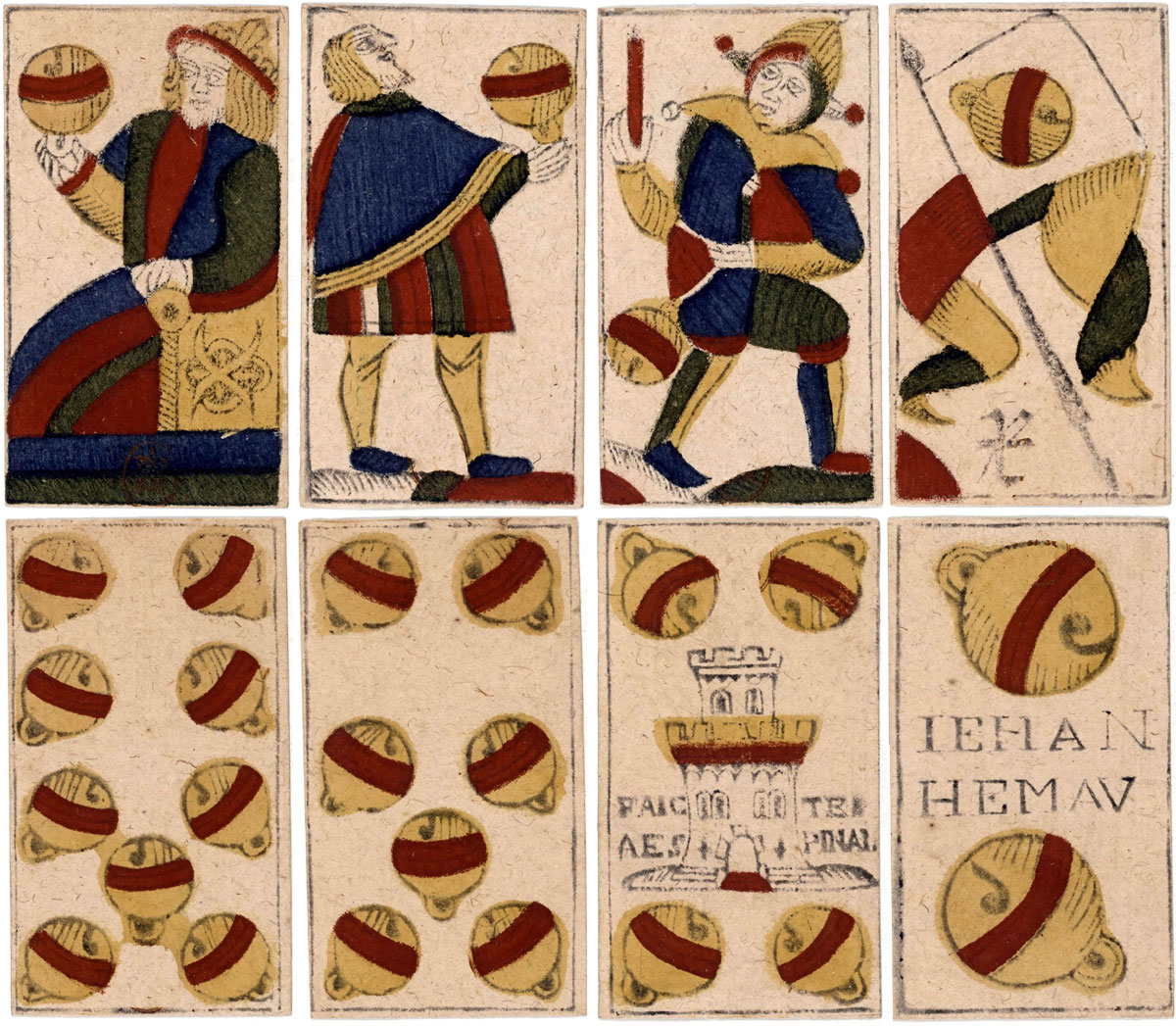
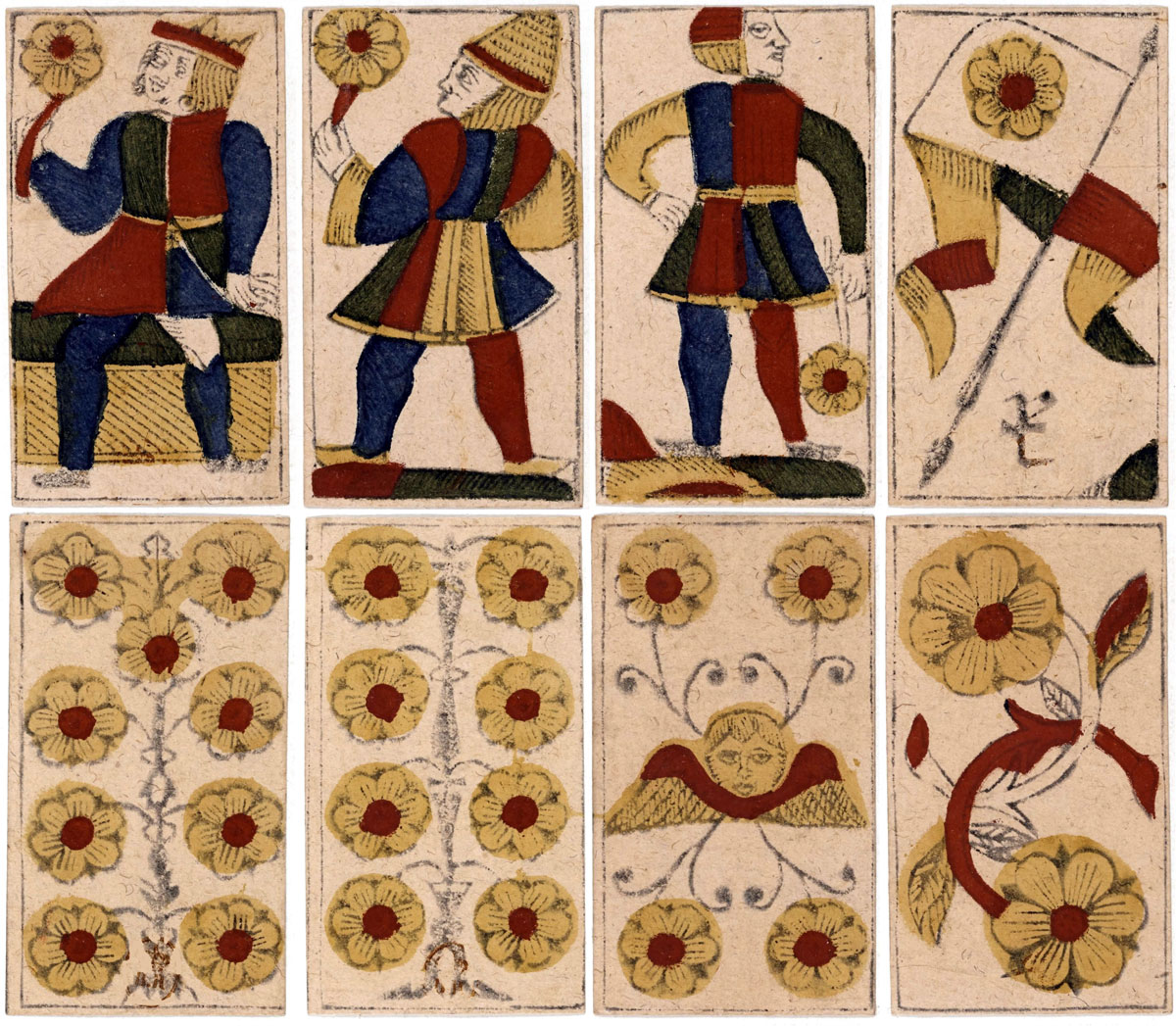
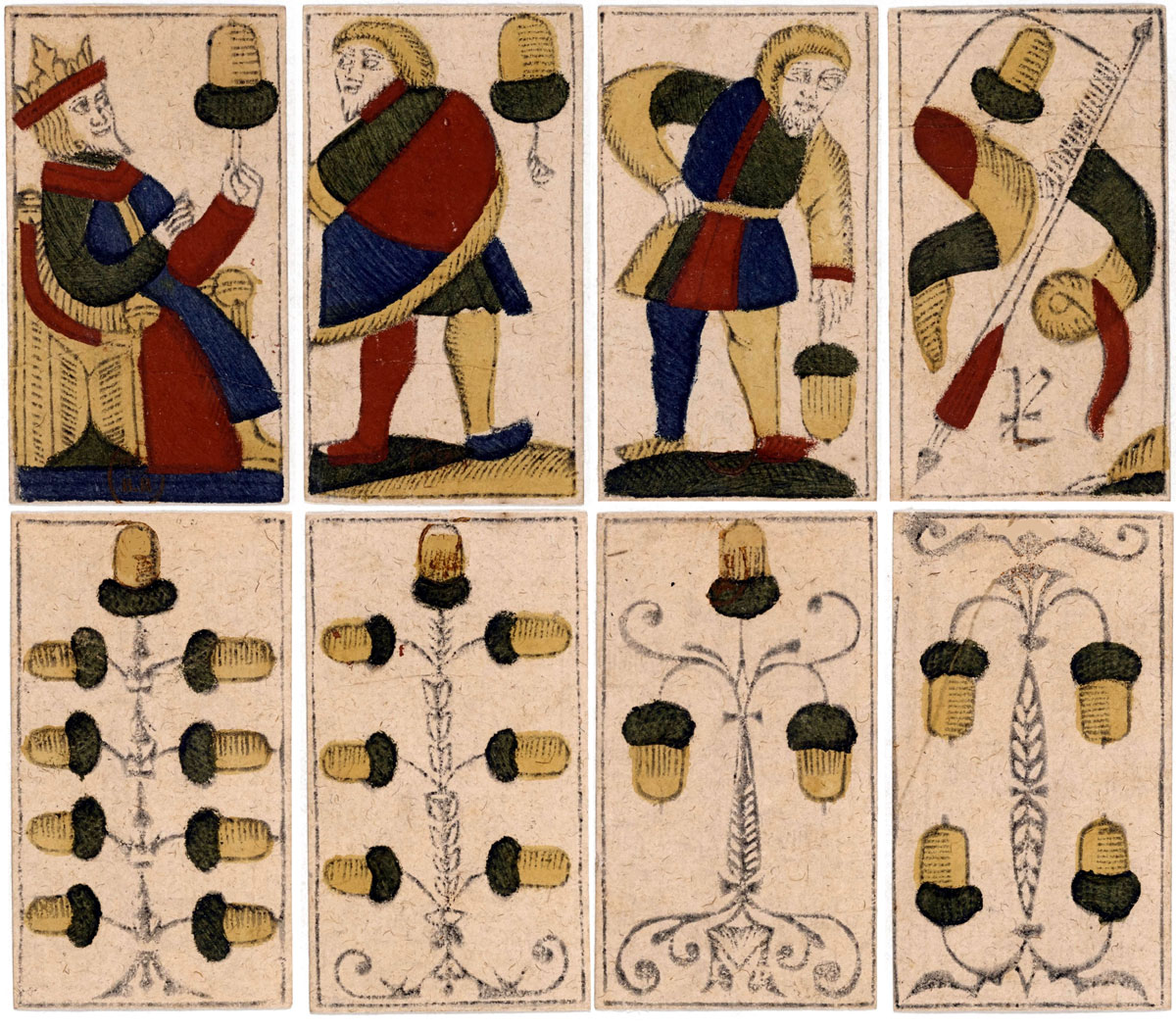
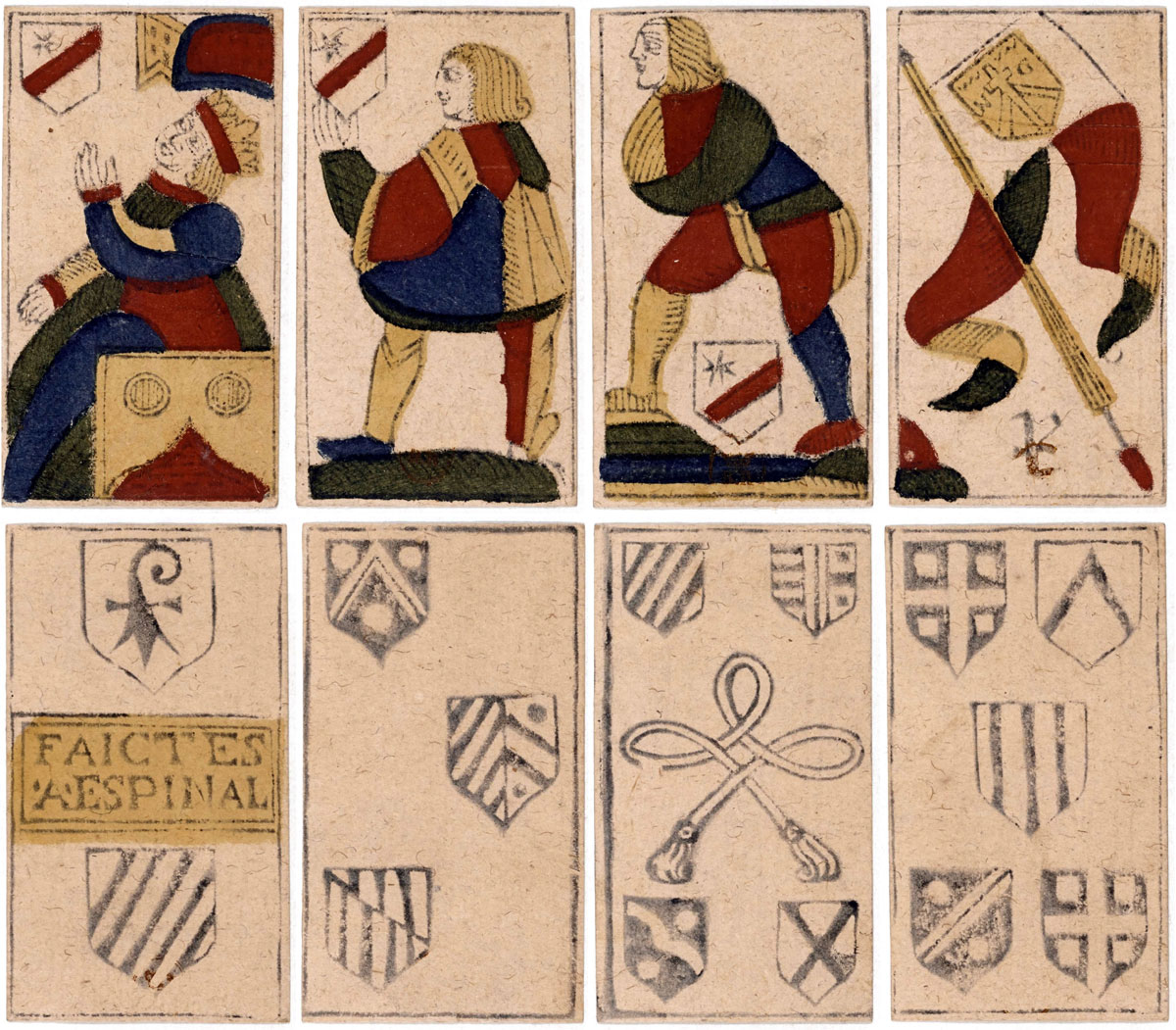
Above: Swiss-suited playing cards by Iehan Hemau, Espinal, c.1630. 48 cards printed from woodblocks and hand-coloured using stencils. The banner 10 of shields has the initials N.G which may be the wood-cutter. Source Bibliothèque nationale de France
Notes & References
* Banner 10s were also found in some early German packs, see: Early German playing cards • • • the Painted Stuttgart cards, c.1430 • • • Peter Flötner, c.1545►
The Latin-suited pack by the South German Engraver, c.1496, has aces and banner 10s.
Bibliothèque nationale de France: Jeu de cartes à enseignes suisses►
By Simon Wintle
Spain • Member since February 01, 1996 • Contact
I am the founder of The World of Playing Cards (est. 1996), a website dedicated to the history, artistry and cultural significance of playing cards and tarot. Over the years I have researched various areas of the subject, acquired and traded collections and contributed as a committee member of the IPCS and graphics editor of The Playing-Card journal. Having lived in Chile, England, Wales, and now Spain, these experiences have shaped my work and passion for playing cards. Amongst my achievements is producing a limited-edition replica of a 17th-century English pack using woodblocks and stencils—a labour of love. Today, the World of Playing Cards is a global collaborative project, with my son Adam serving as the technical driving force behind its development. His innovative efforts have helped shape the site into the thriving hub it is today. You are warmly invited to become a contributor and share your enthusiasm.

Related Articles
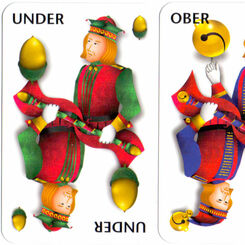
Modern Swiss-German Pattern
Modern Swiss-German Pattern by AGMüller, c.2000.
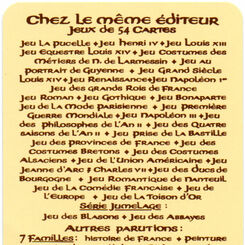
Éditions Dusserre, Paris
Éditions Dusserre, Paris.
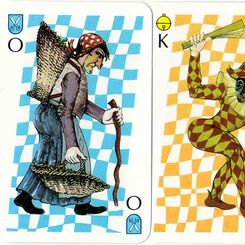
Krienser Fasnachts-Jass 1988
The Krienser Fasnachts-Jass deck was designed and published by Léon Schnyder from Kriens for the 198...
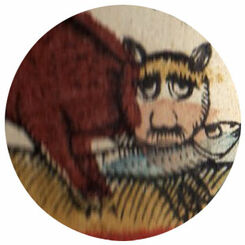
Animal Tarot
Woodblock and stencil Animal Tarot cards, probably of Swiss origin, 2nd half 18th century.
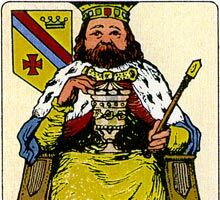
Schweizer Luxus-Jasskarte No.41
The lower and upper knaves are depicted in a vibrant and lively manner, while the enthroned kings ar...
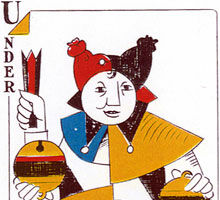
Jass Allemand
Egbert Moehsnang produced this contemporary Swiss-suited, double-ended pack, based on original XV ce...
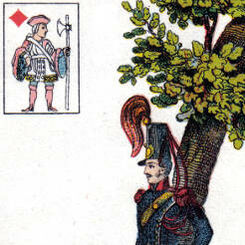
Livre du Destin
Livre du Destin or Book of Fate, printed by B.P.Grimaud, Paris, c.1900.

Lequart Aluette
Spanish-suited Aluette pack with 'FABRICANDO IN MADRID' printed on the Two of Swords and the legend ...
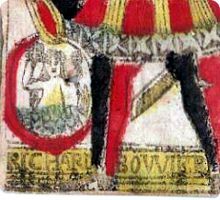
Richard Bouvier
The assorted antique playing cards shown below are examples of the French 'Paris' pattern from the s...
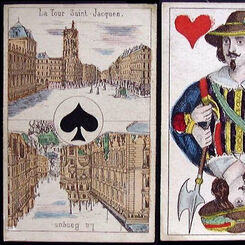
Alphonse Arnoult
Finely engraved deck by Alphonse Arnoult (Paris), c.1860. 52 cards.
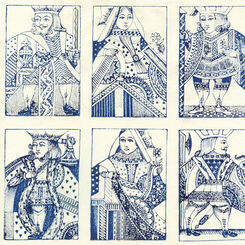
Boisse English pattern
Boisse English pattern, c.1870 based on designs by De La Rue.
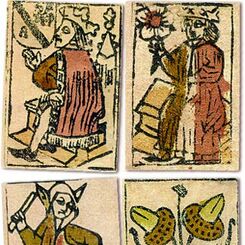
Swiss Playing Cards
The Swiss national suit system of shields, acorns, hawk bells and flowers emerged sometime during th...

Translucent Erotic Playing Cards, page 2
Translucent Erotic Playing Cards, page 2

Translucent Playing Cards, c.1850
Cards from a translucent pack. Erotic images are concealed in the middle layer of the card and becom...
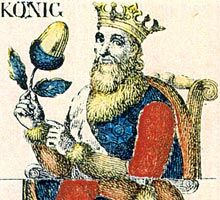
David Hurter, Schaffhausen
David Hurter built up a playing card business in Schaffhausen during the 18th century.
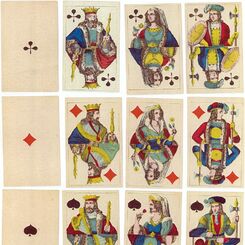
Müller (Diessenhofen), c.1840-50.
Playing Cards made by J. Müller, Diessenhofen, c.1840-50 with court cards coloured differently ...
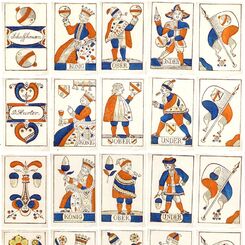
Swiss Playing Cards by David Hurter, c.1830
David Hurter had begun to build up a playing card business in Schaffhausen during the late 18th cent...
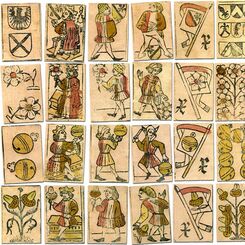
Antique Swiss Playing Cards, c.1530
The Swiss national suit system of shields, acorns, hawkbells and flowers originated sometime during ...
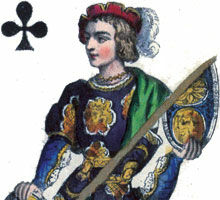
O. Gibert, Paris c.1840-60
Gibert was a master card-maker whose fashionable playing cards were of a very high standard.
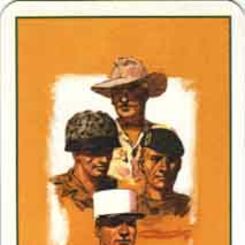
Polaires - Foreign Legion Playing Cards
A Bridge-style deck featuring Foreign Legion paintings by Maitre Rosenberg.
Most Popular
Our top articles from the past 60 days






















